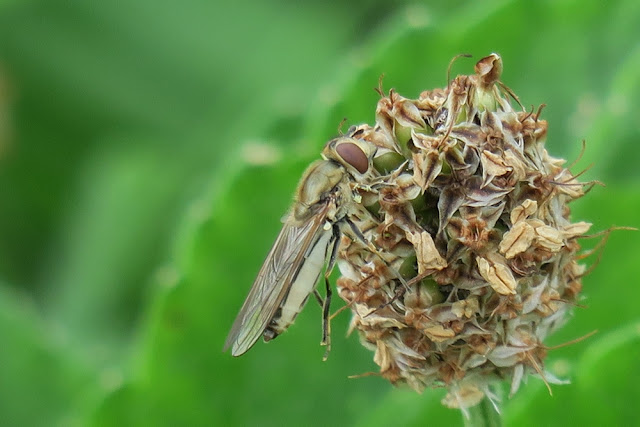Who? That is what I want to know, just who is it rushing around inside my laptop to fulfill my wishes with regard to this and that? Who are the "we"? There is an implicit dishonesty in this, to give the impression that Microsoft are being helpful, that their folks are on the case. "The software is making the darn thing work, eventually, and if the wind is blowing east, north-east." That would be a more honest statement. To be fair I got my speaker connected within five minutes, but that is not the point. Anyway the Laura Marling album, Alas I cannot swim, which I bought years ago and barely listened to, is a good listen on this holiday Monday morning.

I am supposed not to be writing this, my sadly neglected blog, I have too much to do. But stopping, and not doing things is important. This is a very lovely collection of songs, I should dig out the other albums. Of late I have been listening to Courtney Marie Edwards (wonderful country music with growling guitars), Joni Mitchell (Hissing... is one of my favourite albums of all time), Alasdair Roberts (What news, is excellent if you like traditional type folk music, old songs revived with super vocals), Neko Case (a bit ordinary), Mr Fingers (laid back house, Ibiza style), Jonathan Wilson (not the new album, haven't got that, yet, hippy magic, stunning guitar playing on the first two albums, a favourite) and Sons of Kemet (Your queen is a reptile, politically charged, a celebration of important women who you likely have not heard of, a different sort of jazz, takes its time to get under your skin but well worth an explore).
That was a diversion, the insect world is what I should diary. Here's a recent (slightly edited) FB post on Orkney Insects Open Forum:
Two amazing nights for moths. Friday/Saturday reminded me of what it was
like 40 years ago in Sussex, moths in front of the headlights all the
time between Harray and Warbeth, but as I drove through better habo
there were so many, I needed a huge net on the front of the car, then
I'd still be identifying them now. Three traps that night, with a
slightly late start due to some technical issues, 47 species, 225 moths (plus the escapees of course). Last night I just set one trap,
my 40w actinic, down by our wee wood (really good habo) so far 37
species, 105 moths, also four species of beetle, quite a lot of
Helophorus (likely aequalis), a Nicrophorus investigator and two species
that require further attention. Several species of caddis but I just
don't have the energy for those, and rather a lot of diptera, all I could id
was a Bibio pomonae, gave up on the rest. Whilst trapping
last night I had a wander around with the net, hundreds of Agriphila
straminella, the commonest grass moth, many Dark Marbled Carpet,
Middle-barred Minor, Silver-ground Carpet, Celypha lacunana, and three
plume moths which I just could not catch (I think they were all the same
species). Just a few pictures, including what I am pretty sure is Campion, I often find Noctuids hard, I think it is partly because there is an expectation of identifying them, whilst with micros I start from the position that it will be a tricky identification which I may not be able to achieve.


Help already received suggests Campion, a species I don't catch very often whilst Lychnis is daily at the moment.
A female Bee Moth, Aphomia sociella, larger than many macros it is classed as a micro. I was surprised at the size and colour (green tints) of this lovely fresh female, I think I must have just caught males previously. Unfortunately it escaped so egg box images only.
Eucosma campoliana, a very pretty micro that I catch very occasionally.
I've been catching a few of these this year, never seen them before, they vary in the strength of the markings quite a bit, I'm thinking in the Ancylis area maybe subarcuana/geminana?
The new camera is fab, not used for any of the above it's macro capabilities are limited. And a present of the eye piece viewer (a serious birthday present for a nondescript age) has made it all the better.
Loch of Wasdale
Sedgie
A cheering sight, breeding Arctic Terns. I recently came across a huge colony, maybe 500 pairs, where they have not, to my knowledge, bred in recent years. Last year the Skiba Geo ones all failed, starved to death, but this year there seem to be loads of sandeels. The only disappoinetment is the inland ones near here appear to have failed.
Harbour Seal from the beach, they like to come up and look at the hound.
The Brough of Birsay from the Marwick direction where there are piles of Puffins and Razorbills. On Marwick itself the Guillemots and Kitts seem to be doing ok. I'm even seeing Arctic Skuas regularly.
Our wee pond has proven its worth with 100s of Helophorus aequalis (probably) emerging. The House Sparrows have enjoyed this feast. The water beetles have been in big numbers all over the place on these sunny days, apparently they are denzins of shallow ponds and they have taken flight as these have dried up.
Keyed out to Helophorus aequalis, the other possibility is grandis (dissection required) but they don't look quite right for that species, to be checked though.


































